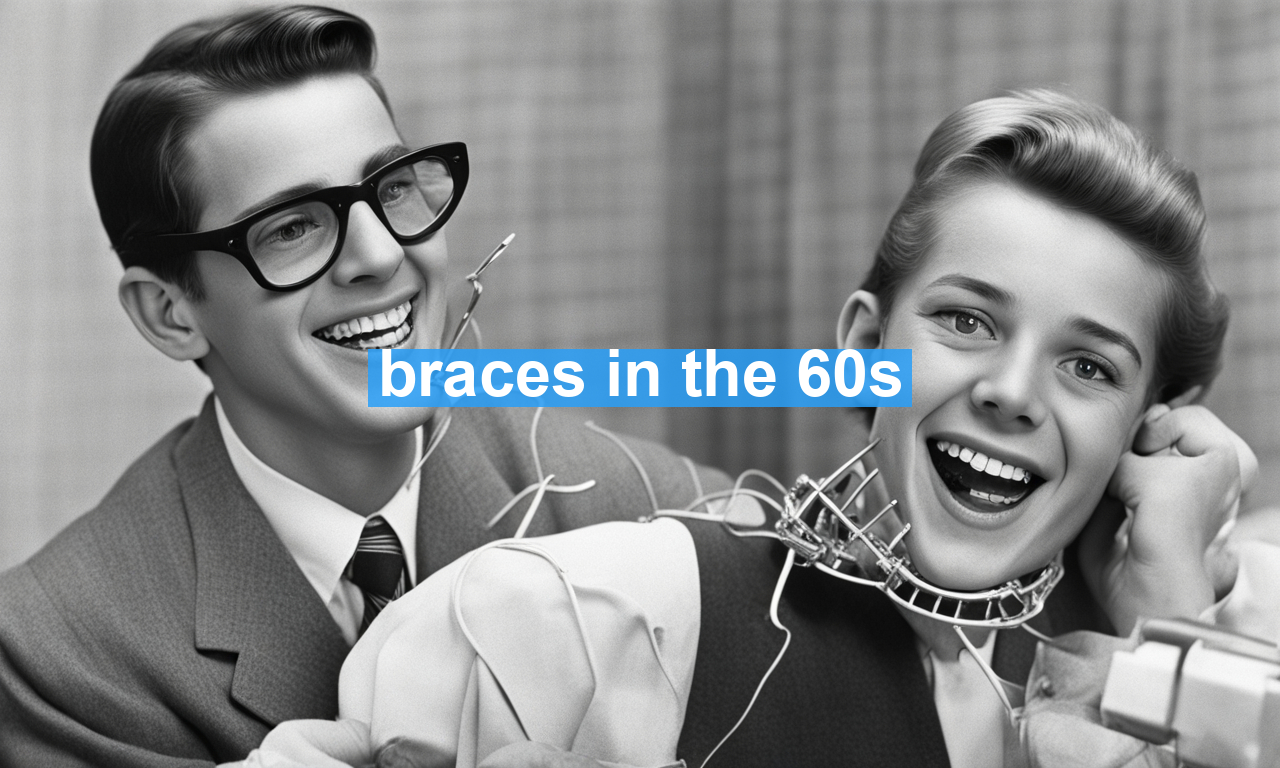In the 1960s, braces were often viewed as a rite of passage for many children and teenagers. But unlike today’s sleek and often under-the-radar orthodontic solutions, braces back then were quite a different story. If you’ve ever wondered what wearing braces in the 60s was like and how orthodontics has evolved over the decades, you’re in for a captivating read. We’ll dive into the history, technological advancements, and the unique experiences of those who wore braces during this transformative decade.
The Evolution of Braces: The 1960s
The orthodontics of the 1960s bear little resemblance to the high-tech options available today. Back then, getting braces meant adjusting to a much bulkier apparatus and a lot of guesswork on the part of your orthodontist.
Materials Used
In the 60s, metal bands wrapped around each tooth were the norm. These thick bands, often made from stainless steel, were connected by larger wires that shaped the teeth over time. Unlike today’s options, like colored elastics or invisible aligners, there was little room for customization. Comfort was often sacrificed for the sake of practicality.
Technology and Methodology
Orthodontists in the 60s relied more heavily on impressions and x-rays to determine the conditions of teeth and jaws. Treatments were significantly longer, sometimes spanning close to five years, compared to today’s average of 18-24 months. Adjustments were an ordeal, often requiring extensive appointments that were accompanied by a significant amount of discomfort.
Common Questions About Braces in the 60s
How Did People React to Braces Back Then?
Braces in the 60s were often regarded as unpleasant but necessary. Children who wore them were sometimes teased due to the bulky appearance and visible metal bands. However, those same devices eventually became a point of pride as they symbolized an investment in that child’s future smile.
Were There Any Alternatives?
Alternatives to traditional braces were virtually non-existent. The concept of clear aligners or lingual braces (braces placed on the back of the teeth) was not yet realized. In essence, if you needed orthodontic treatment, you were in for a mouthful of metal.
What Was the Cost?
Orthodontic treatments during the 60s were expensive, but not nearly as costly as today when adjusting for inflation. For reference, it’s estimated that braces could cost a few hundred dollars back then. Nonetheless, it still represented a significant financial investment for families.
How Did They Affect Daily Life?
Living with braces in the 60s meant substantial changes to daily routines:
–
–
–
The Cultural Impact
Interestingly, the 60s laid the groundwork for our modern understanding of dental health and the importance of orthodontics. Many people who wore braces during this time reported a significant boost in their self-confidence after their treatments were completed, which positively influenced their social and professional lives.
Key Takeaways
Wearing braces in the 60s was a vastly different experience compared to today. They were bulkier, less comfortable, and treatments lasted longer. Despite these drawbacks, the advancements in orthodontics during this period were crucial stepping stones that led us to the more advanced and effective treatments we have today.
For those interested in a deeper dive into the history of orthodontics, you may find the American Association of Orthodontists and this article on Britannica enlightening.
The world of orthodontics has come a long way since the 1960s. But it’s essential to appreciate these humble beginnings to fully understand and respect the highly advanced treatments available today. Whether you wore braces back then or benefited from modern solutions, one thing remains clear: A beautiful smile is timeless.

